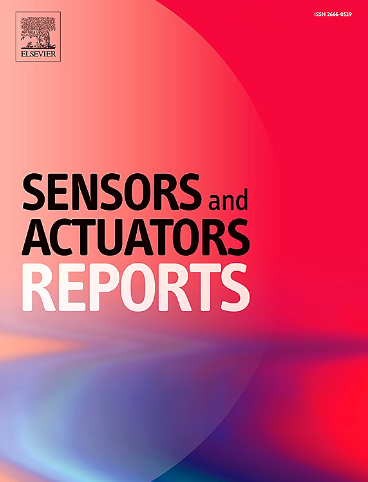基于双侧孔LSPR的实验室尖端光纤用于维生素K1检测
IF 7.6
Q1 BIOTECHNOLOGY & APPLIED MICROBIOLOGY
引用次数: 0
摘要
维生素K是血液凝固、骨骼代谢和多种生理功能所必需的。本研究旨在模拟和制造一种功能双侧孔纤维(DSHF)生物传感器,以Au@Ag核壳纳米粒子(csnp)和多壁碳纳米管/壳聚糖(MWCNT/Chit)纳米混合物作为实验室尖端纤维(LOTF)检测维生素K1 (VK1)。基于局域表面等离子体共振(LSPR),将csnp固定在DSHF尖端,设计了基于折射率(RI)传感的无标签LOTF。采用化学蚀刻法在PM光纤尖端制备了DSHF。有限元法(FEM)和实验分析表明,功能化DSHF对csnp的RI范围为1.3332 ~ 1.3604 RIU,具有极高的RI灵敏度,分别为SRIUsim ~ 2322.84nm/RIU和SRIUexp ~ 2310.35nm/RIU。在0-10-3 g/l范围内,该传感器对VK1的检出限为1.06 × 10-5µg/l。为了评估所提出的方法在实际样品中的适用性,传感器在人血清样品中进行了测试。使用胆固醇、多巴胺、葡萄糖、肝素和维生素C (VC)作为干扰元素来测量LOTF的选择性。这种光纤生物传感器对VK1具有极高的灵敏度和选择性,这是由于涂层的MWCNT/Chit纳米杂化物与VK1分子之间发生了特定的氧化还原反应,导致纳米杂化物的介电功能显著增加,并且在不同浓度的VK1下,所提出的生物传感器的LSPR共振波长发生了位移。本文章由计算机程序翻译,如有差异,请以英文原文为准。
Lab on-tip fiber based on dual side hole LSPR for vitamin K1 detection
Vitamin K is essential for blood clotting, bone metabolism and diverse physiological functions. This study aims to simulate and fabricate a functional dual side hole fiber (DSHF) biosensor to Au@Ag core-shell nanoparticles (CSNPs) and multi-walled carbon nanotube/chitosan (MWCNT/Chit) nanohybrid as a lab-on-tip fiber (LOTF) for detecting vitamin K1 (VK1). Label-free LOTF based on refractive index (RI) sensing was designed based on localized surface plasmon resonance (LSPR) using immobilizing CSNPs to the DSHF tip. DSHF was fabricated using chemical etching a tip of PM fiber optic. The finite element method (FEM) and experimental analysis indicate that the functionalized DSHF to CSNPs can sense the RI range of 1.3332-1.3604 RIU with extremely high RI sensitivities of and respectively. The obtained limit of detection of the sensor for VK1 was 1.06 × 10-5 µg/l in the range of 0-10-3 g/l. To evaluate the applicability of the proposed method in the actual sample, the sensor was tested in the human serum sample. The selectivity of the LOTF was measured using cholesterol, dopamine, glucose, heparin, and vitamin C (VC) as interfering elements. The extremely high sensitivity and selectivity of this optical fiber biosensor to VK1 is due to a specific redox reaction between coated MWCNT/Chit nanohybrid and VK1 molecules, leading to a significant increase in the dielectric function of the nanohybrid and following it the LSPR resonance wavelength of the proposed biosensor was shifted at different concentrations of VK1.
求助全文
通过发布文献求助,成功后即可免费获取论文全文。
去求助
来源期刊

Sensors and Actuators Reports
Multiple-
CiteScore
9.60
自引率
0.00%
发文量
60
审稿时长
49 days
期刊介绍:
Sensors and Actuators Reports is a peer-reviewed open access journal launched out from the Sensors and Actuators journal family. Sensors and Actuators Reports is dedicated to publishing new and original works in the field of all type of sensors and actuators, including bio-, chemical-, physical-, and nano- sensors and actuators, which demonstrates significant progress beyond the current state of the art. The journal regularly publishes original research papers, reviews, and short communications.
For research papers and short communications, the journal aims to publish the new and original work supported by experimental results and as such purely theoretical works are not accepted.
 求助内容:
求助内容: 应助结果提醒方式:
应助结果提醒方式:


